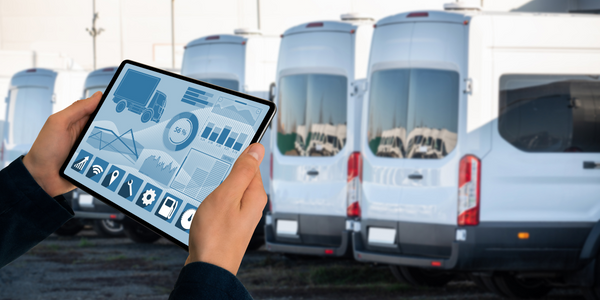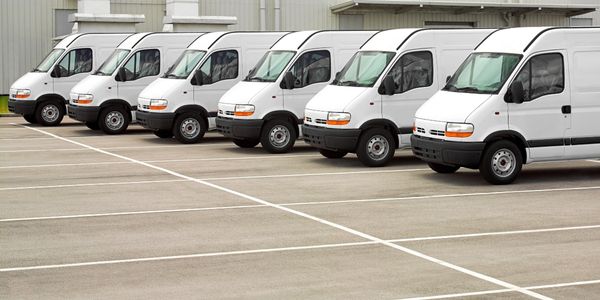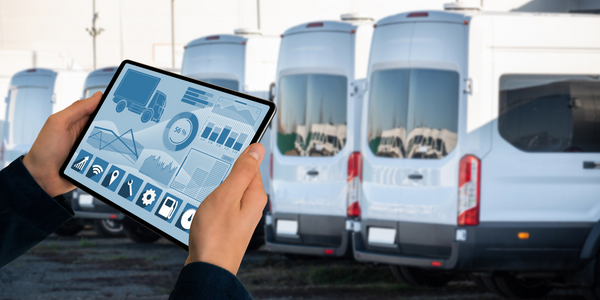Customer Company Size
Mid-size Company
Region
- America
Country
- United States
Product
- Acumatica ERP
Tech Stack
- SQL
- QuickBooks
Implementation Scale
- Enterprise-wide Deployment
Impact Metrics
- Productivity Improvements
- Cost Savings
- Revenue Growth
Technology Category
- Functional Applications - Enterprise Resource Planning Systems (ERP)
Applicable Functions
- Logistics & Transportation
Use Cases
- Supply Chain Visibility
- Fleet Management
- Last Mile Delivery
Services
- System Integration
- Software Design & Engineering Services
About The Customer
R.A.S. Logistics Inc. is a last-mile delivery service company that was founded in 1998 as an appliance installation firm in Milwaukee, Wisconsin. The company's business model changed dramatically in 2001 when General Electric (GE) won the supply chain contract to deliver appliances for Home Depot. GE tapped R.A.S. to handle the delivery and installation of its washers, dryers, and refrigerators to Home Depot's customers' homes. As Home Depot's appliance and furniture sales grew, so did R.A.S. Logistics. The company expanded its services to include deliveries for other large customers, including Wayfair, Restoration Hardware, and Mattress Firm, among others. Soon, R.A.S. was delivering a wide range of products, including furniture, spas, mattresses, and exercise equipment. The company grew from its single location to 21 locations, all east of the Mississippi River. Today, R.A.S. is headquartered in Elkhart, Indiana. Each of the company's locations operates as a separate legal entity, creating operational silos. The company has grown to generate more than $40 million in sales.
The Challenge
R.A.S. Logistics Inc. was founded in 1998 as an appliance installation firm in Milwaukee, Wis. The company’s business changed dramatically just three years later when GE won the supply chain contract to deliver appliances for Home Depot. GE tapped R.A.S. to handle delivery and installation of its washers, dryers and refrigerators to Home Depot’s customer’s homes. As Home Depot grew, R.A.S. grew. Other large customers also turned to R.A.S. for deliveries, including Wayfair, Restoration Hardware and Mattress Firm, among others. Soon R.A.S. was delivering furniture, spas, mattresses and exercise equipment. The company grew from its single location to 21 locations, all east of the Mississippi. Today, R.A.S. is headquartered in Elkhart, Indiana. Each of the locations was a separate legal entity and as such an operational silo. Unfortunately, its financial system, QuickBooks, couldn’t handle the needs of what had become a more than $40 million in sales company. R.A.S. used a custom SQL database program to invoice its customers. It wasn’t connected to QuickBooks; information had to be manually input into QuickBooks. R.A.S. uses 200 to 300 independent contractors to perform the deliveries. R.A.S. used a third party to handle independent contractor payments, which added another manual layer of complexity. Further complicating payments to independent contractors was a program with Enterprise Truck Sales whereby R.A.S. would financially help the independent contractor secure its delivery truck, and then deduct the rental payments for the vehicle from the revenue of the deliveries. Ultimately remitting that payment from the independent contractor directly to Enterprise.
The Solution
R.A.S. Logistics implemented Acumatica with Crestwood Associates, which went very well, Pearson said. “If I did it over again, we wouldn’t have tried to put historical information in because we had some difficulties on our end,’ he says. “But the implementation of new data went well, and my group was up to speed much faster than they thought they would be.” With multiple locations, each company branch is now able to enter all transactions into the same system. Acumatica calculates chargebacks, invoices, and memos which gives each branch and the main office a real-time view of each delivery, as it happens, and with the associated costs. With real-time information at their fingertips, managers better understand the costs associated with missed deliveries, for example. “It’s very expensive to get a missed delivery completed; we can’t put it on normal route, it needs a special route, and we pay a premium to make delivery,” Pearson says. “So they now have better financial data and are more aware of the costs associated with that.”
Operational Impact
Quantitative Benefit

Case Study missing?
Start adding your own!
Register with your work email and create a new case study profile for your business.
Related Case Studies.

Case Study
Remote Temperature Monitoring of Perishable Goods Saves Money
RMONI was facing temperature monitoring challenges in a cold chain business. A cold chain must be established and maintained to ensure goods have been properly refrigerated during every step of the process, making temperature monitoring a critical business function. Manual registration practice can be very costly, labor intensive and prone to mistakes.

Case Study
IoT-based Fleet Intelligence Innovation
Speed to market is precious for DRVR, a rapidly growing start-up company. With a business model dependent on reliable mobile data, managers were spending their lives trying to negotiate data roaming deals with mobile network operators in different countries. And, even then, service quality was a constant concern.

Case Study
Vehicle Fleet Analytics
Organizations frequently implement a maintenance strategy for their fleets of vehicles using a combination of time and usage based maintenance schedules. While effective as a whole, time and usage based schedules do not take into account driving patterns, environmental factors, and sensors currently deployed within the vehicle measuring crank voltage, ignition voltage, and acceleration, all of which have a significant influence on the overall health of the vehicle.In a typical fleet, a large percentage of road calls are related to electrical failure, with battery failure being a common cause. Battery failures result in unmet service agreement levels and costly re-adjustment of scheduled to provide replacement vehicles. To reduce the impact of unplanned maintenance, the transportation logistics company was interested in a trial of C3 Vehicle Fleet Analytics.

Case Study
Zonar Takes the Wheel with a M2M Solution
Zonar’s fleet management solutions collect, report and analyze data before, during and after a vehicle’s trip. The company needed Machine-to-Machine (M2M) connectivity to enable communication between in-vehicle devices and back-end systems. To deliver high volumes of potentially sensitive information from and to moving vehicles – and keep pace with its rapid business growth – Zonar wanted a highly secure solution that it could easily manage and that had the required national and global reach.









